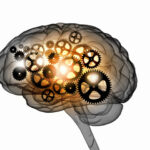What is Reactive Attachment Disorder?
Reactive attachment disorder is a problem with social interaction that occurs when a child’s basic physical and emotional needs are neglected, particularly when the child is an infant.
What Causes Reactive Attachment Disorder?
Reactive Attachment Disorder is caused by the abuse or neglect of an infant’s needs for: food, physical safety, touching and most importantly the ability to develop an emotional bond with an individual who is entrusted with the emotional care and support of the child (i.e. the Caregiver). The risk of neglect to the infant or child increases when the: Caregiver is mentally retarded, Caregiver lacks parenting skills, Parents are isolated, Parents are teenagers. In addition to this, a frequent change in caregivers (for example, in orphanages or foster care) is another cause of reactive attachment disorder, because the child never gets used to any one individual. A consistent caregiver is imperative for the formation of a predictable attachment that contributes to a personal sense of security and trust. Children who are adopted from foreign orphanages are commonly affected, particularly if they were removed from their birth parents during the first weeks of life, or worse at a few months, when bonding with the original caregiver is established and suddenly broken.
What are Symptoms of Reactive Attachment Disorder in a Child?
The symptoms of Reactive Attachment Disorder in a child include: an avoidance of the caregiver; avoidance of physical contact; difficulty in being physically comforted; does not make distinctions when socializing with strangers; resists social interaction; a desire to be alone.
What are Symptoms of Reactive Attachment Disorder in a Caregiver?
The symptoms of Reactive Attachment Disorder in a caregiver include a disregard for the child’s basic emotional needs for comfort, stimulation, and affection; a disregard for child’s basic physical needs like food, toileting, and play
How is Reactive Attachment Disorder Diagnosed?
The diagnosis of Reactive Attachment Disorder includes a complete history, physical examination and a psychiatric evaluation. This evaluation will be helpful in developing a treatment plan.
How is Reactive Attachment Disorder Treated?
Reactive Attachment Disorder treatment has two parts. The first priority is to make sure the child is currently in a safe environment where emotional and physical needs are met. Once that has been established, the next step is to change the relationship between the caregiver and the child, if the caregiver has caused or contributed to the problem. Parenting skills classes can help with this. These skills give the caregiver the ability to meet the child’s needs and help them bond with the child. The caregiver should also have counseling to work on any current problems, such as drug abuse or family violence. Parents who adopt babies or young children from foreign orphanages should be aware that this condition might occur and be sensitive to the child’s need for consistency, physical affection, and love. These children may be frightened of people and find physical affection overwhelming at first, and parents should try not to see this as rejection. It is a normal response in someone who has been abused to avoid contact. Hugs should be offered frequently, but not forced.
What Can be Expected from Reactive Attachment Disorder Treatment?
The right intervention can improve the outcome for a child with this condition. If not treated, this can permanently affect the child’s social interactions. It can eventually lead to Anxiety, Depression, Post-traumatic Stress Disorder and other psychological problems
How can Reactive Attachment Disorder be Identified?
This disorder is usually identified when a parent (or prospective parent) is at high risk for neglect or when an adoptive parent has difficulty coping with a newly adopted child. Additionally, if you have recently adopted a child from a foreign orphanage or another situation where neglect may have occurred and your child shows these symptoms, see your health care provider.
How can Reactive Attachment Disorder be Prevented?
Early identification is very important for the child. Parents who are at high risk for neglect should be taught parenting skills. Either a social worker or doctor should follow the family to make sure the child’s needs are being met.




